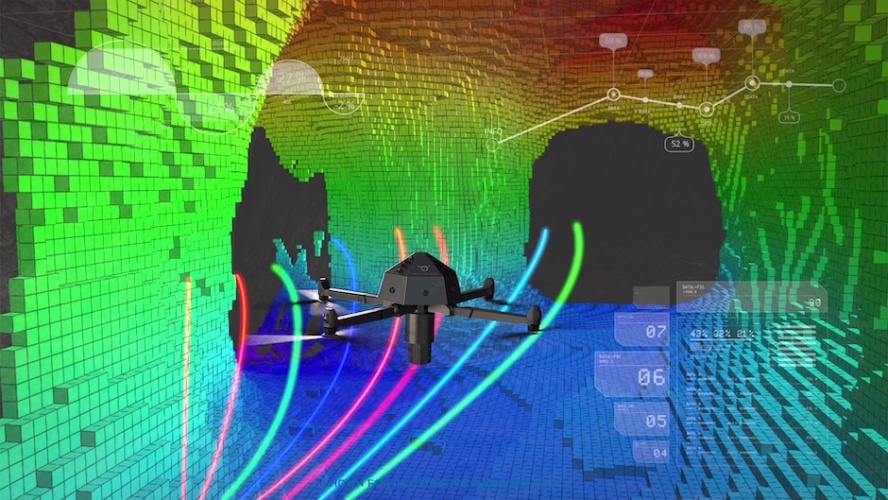Prometheus drones to explore subterranean environments
A project inspired by the sci-fi film ‘Prometheus’ is developing tiny autonomous drones that can navigate and map unexplored subterranean environments beneath the UK’s rail network.

The £2.2m project, funded by Innovate UK, is a collaboration between Headlight AI, Callen-Lenz and Thales, the Universities of Manchester, Bristol and Royal Holloway London, and stakeholder Network Rail.
Due for completion in July, the aim is to provide solutions across industries where underground exploration in harsh conditions is crucial.
Dr Puneet Chhabra, co-founder of Headlight AI, said the project came about during a 2018 Innovate UK event. Chhabra took part in a discussion with Network Rail principal mining engineer Neal Rushton, Manchester University robotics engineer Simon Watson, Royal Holloway computer science professor Sara Bernardini and Bristol University aerial robotics professor Tom Richardson.
“We showed [Neal] some of the work that we’d done and he explained that his vision was to put a circular robot down a tiny 150mm [diameter] borehole next to a railway track,” Chhabra said. “There are thousands of these mines and voids under the tracks and they are interconnected - the limitation at the moment is that they don’t know what is beyond the line of sight, they don’t know what exists and how they are connected and so they aren’t being mapped or surveyed.”
Register now to continue reading
Thanks for visiting The Engineer. You’ve now reached your monthly limit of news stories. Register for free to unlock unlimited access to all of our news coverage, as well as premium content including opinion, in-depth features and special reports.
Benefits of registering
-
In-depth insights and coverage of key emerging trends
-
Unrestricted access to special reports throughout the year
-
Daily technology news delivered straight to your inbox










Water Sector Talent Exodus Could Cripple The Sector
Maybe if things are essential for the running of a country and we want to pay a fair price we should be running these utilities on a not for profit...